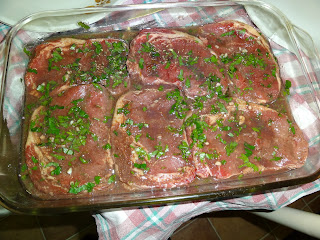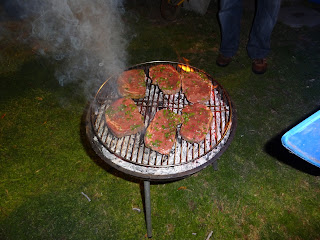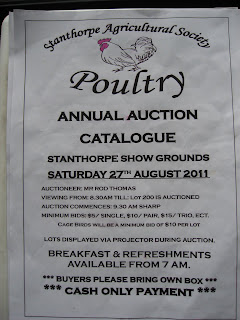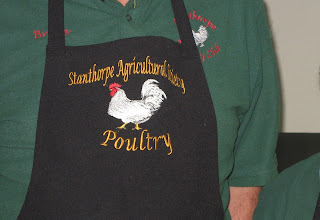It is difficult to send posts from China, so if you don't find a post until late October, please don't give up on me.
I'll probably have lots to Blog about from China.
So here are a few random photos from the farm.
 |
| Here is yesterday's sunset, behind the Western edge of the Great Dividing Range. |
The Hippeastrums are going to be glorious this season.
Here are two photos of them.
This is the "Apple Blossom" Hippeastrum.
And this is "Cocktail". It will be beautiful when it opens fully.
And I can't sign off from the farm without a chook photo.
Remember our new trio of Sussex bantams?
Purchased at the Stanthorpe Poultry Auction a few weeks ago?
Well, they won't sleep in the roost area with the brown ones.
They've roosted in a tree in the chook pen!
Emulating one of our earlier flocks of "flying eagle" chooks.
So I'll close with a photo of them in their leafy roost.
However I must warn you that it's not a very good photo.
But you'll get the general idea.
 |
| Here is the rooster and one hen, happy in their leafy perch. |
And here is the second hen making her way up a branch to "her friends"
It was amazing to watch her climb the branch.
Is she a chook or what?
And on that note I'll bid farewell, for the moment.






































